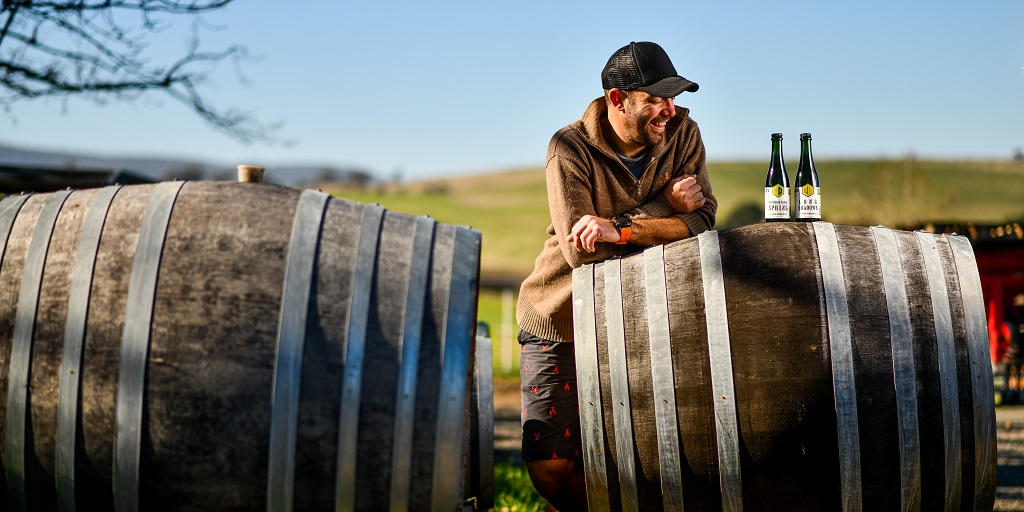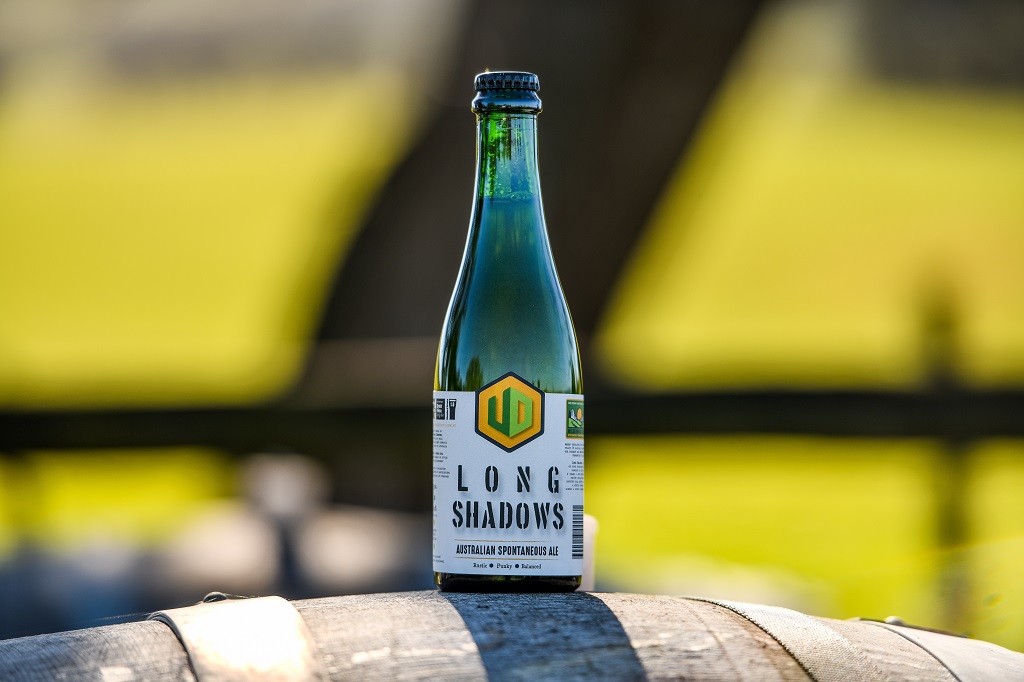
Van Dieman launches spontaneous ales

Picture: Scott Gelston
Will Tatchell from Tasmania’s Van Dieman Brewing is always up for a challenge, and the brewery’s latest beer launch earlier this month is something a bit special.
After four years in barrel, Van Dieman has released its first-ever Australian Spontaneous Ales including Unpredictable Spring, a blend of one, two and three-year-old, spontaneously fermented ales, and Long Shadows, a drier, Brettanomyces wild yeast-driven beer that has been aged in bottle for eight months.
Tatchell, founder and head brewer at Van Dieman’s, said that making spontaneous ales was a “natural progression” in the operations of his hyper-local brewery.
Tatchell is not shy about taking on technically-difficult brewing challenges, bringing Van Dieman’s malting processes in house, as well as farming hops and barley for the malt on the estate.
While he was inspired by the centuries-old Lambic region techniques for when it came to Van Dieman’s own spontaneous ales, Tatchell had to adjust the operation a little to make it a bit more Tasmania-friendly.
“We’re obviously on the other side of the world, so it will inevitably be different in regards to ingredients rather than process,” he said.
“One big difference is the coolship,” said Tatchell. “It’s not specifically designed, but it’s an open-topped dairy fermenter that we’ve placed in an isolated space, rather than air-breathed.
“This is to control and to isolate it, but we have a fan that draws external air in overnight and we’re able to direct the fan onto the beer and capture the wild yeast and bacteria.”
This happens over the course of usually 24 hours, explained Tatchell, before it’s transferred into oak barrels.
Starting the program in 2015/16, Van Dieman now has three-year-old barrel aged spontaneous ales to work with, blending them in with more recent batches to further develop flavour profiles.
“I didn’t want to release something ad hoc or for the purposes of marketing. I’m a purist at heart and wanted to experiment so we could understand what was happening in terms of maturation in the barrels and again when we blended it back.
“We’re not reinventing the wheel but we are throwing back a couple of hundred years to how beer used to be produced, utilising the natural environment.”
He said the idea that the beer was both fresh and as locally-made as it gets – with the furthest-travelled ingredients being the yeast strains – was something that really appealed to him.
But creating barrel aged and spontaneous ales like this is a real commitment for any brewer. Not many have the patience or time to wait for years before they can start the blending process, and it can be a difficult operation for anyone who has not done it before.
“As with anything, we research heavily what we should and shouldn’t do, and learn from mistakes other brewers have made.
“We reached out to brewers in Australia and overseas about what they were doing and that provided us with support,” explained Tatchell.
He said that they worked on Van Dieman’s four key principles: predict results; expect failure; accept nature and respect time.
But creating spontaneous ales also involves a certain lack of control that lots of brewers might find a bit anxiety-inducing. Indeed, the main thing Tatchell and the Van Dieman team were able to keep an eye on, ironically, was the weather.
“The biggest thing we can control or take a read on with regards to the beers is weather conditions when were inoculating in the coolship. We take a weathermeasurement 72 hours prior [to exposure], and see what climatic conditions are like.
“When it comes to wind speed we’re starting to understand that if a front that comes across the Great Australian Bight tips into South Australia and it reaches us within 48 hours, fermentation occurs quicker, which I think is due to a pick up of yeast through the wine regions of South Australia.
“If it’s relatively still, you’re looking at a fermentation lag phase of 3-4 days.
“That’s my hypothesis is at the moment, but it’s difficult to say whether it equates to a better beer yet.”

Van Dieman Brewing’s Will Tatchell with Long Shadows and Unpredictable Spring. Picture: Scott Gelston.
As we look at brewing more and more technically challenging beers, it’s inevitable to question whether the beers produced are worth the effort.
“You’d have to ask individual drinkers whether they think it’s a good beer. But I think we’d be naïve to suggest that just because it’s spent three years in barrel it’s ‘good’ – it’s more the quality and drinkability we keep an eye on than the time spent.
“It’s also a case of going back to how its traditionally being done, when we were all less busy 100 or 200 years ago, and it’s about not taking shortcuts. The minute you start to rush things, you’re kidding yourself or you’re diluting the quality.
“We don’t feel we have to get a new kettle sour out every two weeks, and there is a reward for sitting on something and waiting for it, which is the flavour complexity you can generate.”
Van Dieman has brewed and bottled one thousand 375ml bottles of both beer varieties, and they are available through independent bottle shops around Tasmania and through the Van Dieman Brewing website.





